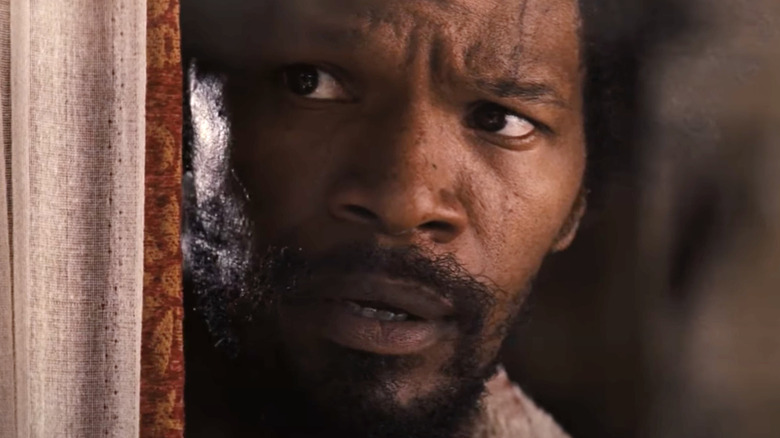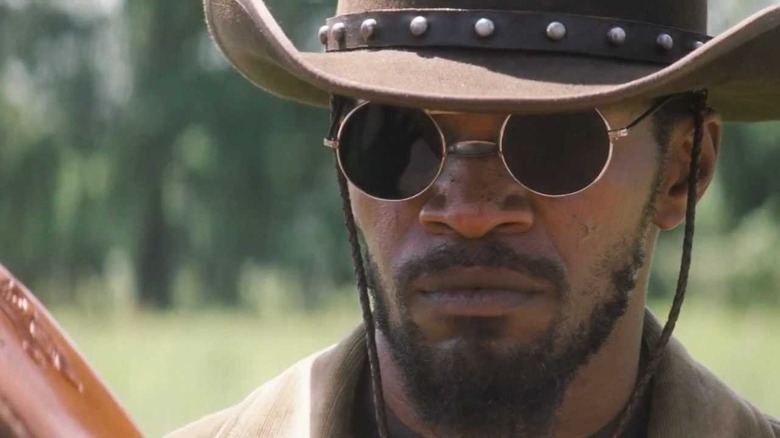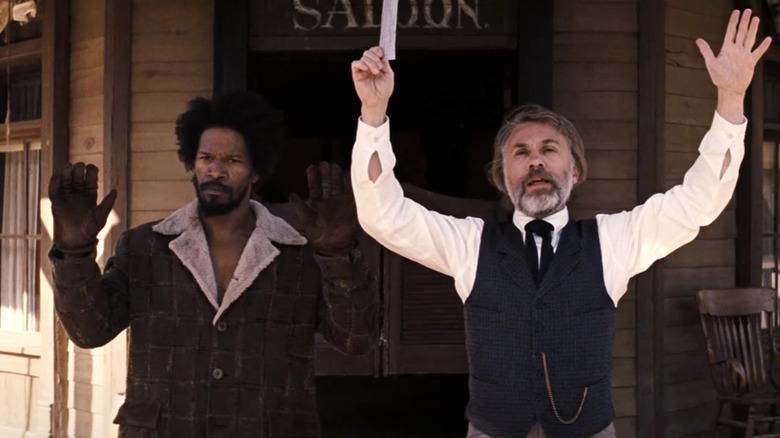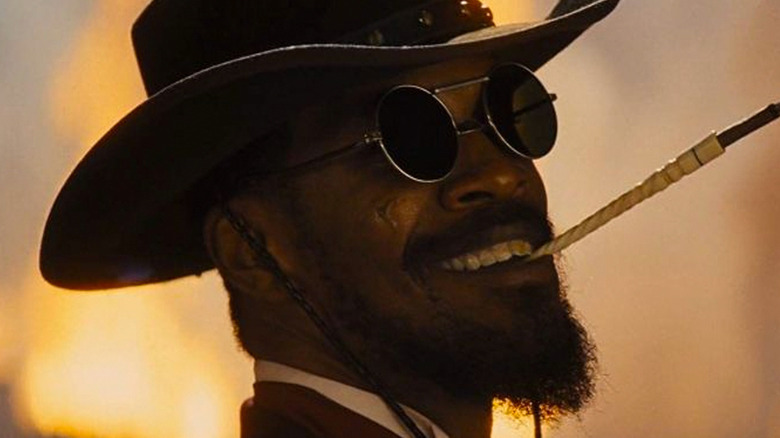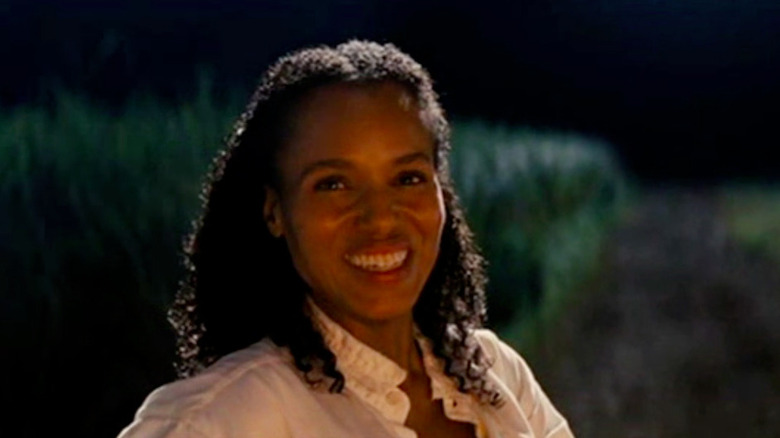Is Django Unchained Historically Accurate?
While the genre remains as widely known as ever before, Western movies themselves have mostly fallen by the wayside. Long gone are the days of actors like Clint Eastwood and John Wayne, whose cowboy characters dominated Hollywood and helped establish the pseudo-myth of the Western gunslinger. That's not to say there are no more Western films at all, however. Modern films like the remake of "True Grit" and the original "The Assassination of Jesse James by the Coward Robert Ford" keep the old traditions alive, they just aren't as common. But among these modern Westerns, few stand out as distinctly as writer-director Quentin Tarantino's "Django Unchained."
There's a few reasons for this film's unique identity, mostly having to do with the film's setting and character, because on top of being a Western, "Django Unchained" is also an anti-slavery film in which the protagonist is a former slave. These aspects are compelling because they give the film a clear message and a unique topic to discuss. That being said, they also come at the cost of something which many Western fans appreciate in their films: historical accuracy. For all its amazing storytelling, "Django Unchained" simply isn't a historically accurate Western film.
Django Unchained is set during the wrong time period
While it's fair to say that the protagonist, Django (Jamie Foxx), isn't typical of most Westerns, this aspect of the film is actually somewhat accurate. Former slaves in the Old West were sometimes cowboys (that is, men who earned their living driving cattle), bounty hunters, lawmen, and anything else you could imagine (via BBC News). However, Django likely would not have become the gunslinging bounty hunter he is until after America's slaves were freed.
This is not because it would have been impossible for a freed slave to be a bounty hunter in 1858, the year that "Django Unchained" takes place, but simply because the myth of the Old West gunfighter — as well as the American West as we think of it — didn't truly emerge until after 1865 (via Library of Congress). So, while it is technically possible for Django to have gone on his grand, bounty hunting journey with Dr. King Schultz (Christoph Waltz), he would not have been twirling his six-shooter on his fingers and quick-draw shooting Candyland's many slave owners.
Real bounty hunters were very different from those in the movie
While it's possible for Django and Schultz to make their living catching wanted men as independent bounty hunters, the way they do it is a bit before their time. However, that is hardly the last thing "Django Unchained" gets wrong about actual bounty hunting in the Old West. For starters, the term "bounty hunter" wasn't something that emerged in relation to catching criminals until the 1950s. Before then, "bounty hunters" were more often men who literally hunted for bounties, as in sums of money. They weren't shooting people, but rather hunting for "the pelts of predatory animals or dead birds" (via Merriam-Webster).
In truth, while there were independent men who hunted criminals for cash, they weren't very common, the pay wasn't overly amazing, and their lives were not nearly as romantic as movies make them out to be. Instead, our conception of the bounty hunter was created by the same 20th century pulp fiction stories that fostered the myths of gun-spinning, quick-draw duels, and saying the phrase "this town ain't big enough for the two of us," like "The Bounty Hunters" by author Elmore Leonard (via Goodreads). In reality, it would have been much more reasonable for Django and Schultz to rescue Broomhilda (Kerry Washington) by some other means.
No, Mandingo fights weren't a thing
Beyond bounty hunting and gun-slinging, "Django Unchained" also gets a few things incorrect about the institution of slavery itself. For starters, the film's famous "Mandingo fighting," during which slave owners force their slaves to fight and likely kill each other, simply did not happen. According to an article from Slate, a large reason behind this reality was economic, as slave owners would not be willing to risk losing valuable slaves in a fight.
That being said, there are some isolated cases of slave owners having their slaves fight each other, though it was hardly in the same manner as Tarantino's brutal Mandingo fights. Famed African American writer Frederick Douglass, who was at one time a slave, once said that sports like wrestling and boxing were popular among slaves and encouraged by slave owners in order to keep "down the spirit of insurrection," as discussed by author Jeffrey T. Sammons in the book "Beyond the Ring: The Role of Boxing in American Society." Likewise, as Slate observes, Tom Molineaux, the first African American to fight for the heavyweight championship, won his freedom in a previous bout against another slave.
Slavery as a whole could have been depicted better
Just like the rest of Tarantino's films, "Django Unchained" takes place in an extreme version of our world. Many things about it are true to life, but most of it is turned up to 11. That's why Django shoots like Clint Eastwood, why the film buys into the romantic myth of Western bounty hunters, and why it uses quasi-fictional Mandingo fights to depict the brutality of slavery. These aspects, combined with Tarantino's trademark hyper-violence and over-the-top characters, make for a relatively entertaining movie.
However, many critics still feel that the film romanticizes everything too much to count as a respectful representation of slavery. "The richness of this story is obscured by the Sam Peckinpah-like violence and by the overly broad characterizations that reduce the character's humanity to caricature," wrote African American writer and Smithsonian secretary Lonnie G. Bunch III in an article for Smithsonian Magazine.
Beyond Tarantino's near-comical obsession with bloodshed, Bunch also found cause to critique his depiction of slave women, who are reduced to essentially "damsels in distress" throughout the film. A serious movie about slavery, he believes, demands that the women also be three-dimensional. While one may argue that these are concessions Tarantino had to make to create a film solely about Django, it's hard to refute Bunch's point. "Django Unchained" is one of the few Hollywood dissections of American slavery, but its eccentric nature makes it and its characters seem unrealistic when we know that the institution itself was all too real.
